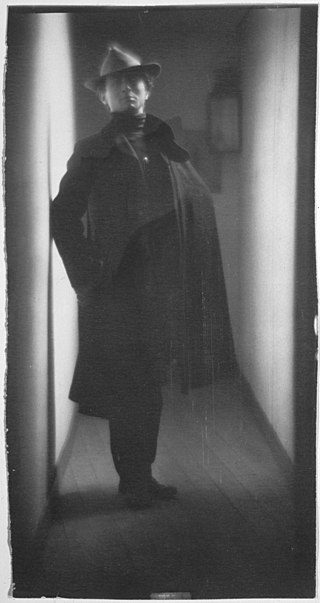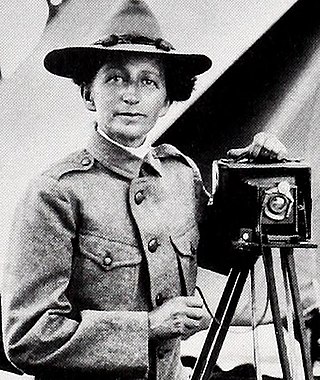
Lodgers in Bayard Street Tenement, Five Cents a Spot is a black and white photograph taken by Danish-American photographer Jacob Riis, in 1889. It was included in his photographic book How the Other Half Lives , published in 1890. [1]

Lodgers in Bayard Street Tenement, Five Cents a Spot is a black and white photograph taken by Danish-American photographer Jacob Riis, in 1889. It was included in his photographic book How the Other Half Lives , published in 1890. [1]
Riis documented the poor conditions of the lower classes of New York in his work. He took several pictures at night accompanying the police in a role that he called "a kind of war correspondent". He used magnesium flash photography, which allowed him to take pictures at night, and often controversially took them without permission of the people he captured on camera. [2]
This photograph shows an overcrowded room of a tenement, with poor conditions of hygiene, and the people of the photograph were taken by surprise. The sanitary police intervened that night because the price of the beds was 5 cents, two cents below the minimum allowed by law. The picture depicts at least six people in very poor conditions and in a very narrow space, with a stove and several belongings visible. They appear sleepy and don't hide their surprise at being awakened at night. Riis himself describes the miserable conditions of the room:
In a room not thirteen feet either way slept twelve men and women, two or three in bunks set in a sort of alcove, the rest on the floor. A kerosene lamp burned dimly in the fearful atmosphere, probably to guide other and later arrivals to their beds, for it was only just past midnight. A baby's fretful wail came from an adjoining hall-room, where, in the semi-darkness, three recumbent figures could be made out. The apartment was one of three in two adjoining buildings we had found, within half an hour, similarly crowded. [3] [4]
Even sometimes with controversial methods, his photographic and journalistic work helped to create legislation that would allow better sanitary life conditions for the poorest classes. [5] [6] [7]
There are prints of this photograph at the Museum of Modern Art, in New York, the Museum of the City of New York, the International Center of Photography, in New York, the San Francisco Museum of Modern Art, and the Library of Congress, in Washington, D.C. [8] [9] [10] [11] [12]

Jacob August Riis was a Danish-American social reformer, "muckraking" journalist, and social documentary photographer. He contributed significantly to the cause of urban reform in the United States of America at the turn of the twentieth century. He is known for using his photographic and journalistic talents to help the impoverished in New York City; those impoverished New Yorkers were the subject of most of his prolific writings and photography. He endorsed the implementation of "model tenements" in New York with the help of humanitarian Lawrence Veiller. Additionally, as one of the most famous proponents of the newly practicable casual photography, he is considered one of the fathers of photography due to his very early adoption of flash.

Edward Jean Steichen was a Luxembourgish American photographer, painter, and curator, renowned as one of the most prolific and influential figures in the history of photography.

How the Other Half Lives: Studies among the Tenements of New York (1890) is an early publication of photojournalism by Jacob Riis, documenting squalid living conditions in New York City slums in the 1880s. The photographs served as a basis for future "muckraking" journalism by exposing the slums to New York City's upper and middle classes. They inspired many reforms of working-class housing, both immediately after publication as well as making a lasting impact in today's society.

The Ashcan School, also called the Ash Can School, was an artistic movement in the United States during the late 19th-early 20th century that produced works portraying scenes of daily life in New York, often in the city's poorer neighborhoods.

A tenement is a type of building shared by multiple dwellings, typically with flats or apartments on each floor and with shared entrance stairway access. They are common on the British Isles, particularly in Scotland. In the medieval Old Town, in Edinburgh, tenements were developed with each apartment treated as a separate house, built on top of each other. Over hundreds of years, custom grew to become law concerning maintenance and repairs, as first formally discussed in Stair's 1681 writings on Scots property law. In Scotland, these are now governed by the Tenements Act, which replaced the old Law of the Tenement and created a new system of common ownership and procedures concerning repairs and maintenance of tenements. Tenements with one or two room flats provided popular rented accommodation for workers, but in some inner-city areas, overcrowding and maintenance problems led to shanty towns, which have been cleared and redeveloped. In more affluent areas, tenement flats form spacious privately owned houses, some with up to six bedrooms, which continue to be desirable properties.

Mulberry Street is a principal thoroughfare in Lower Manhattan, New York City, United States. It is historically associated with Italian-American culture and history, and in the late 19th and early 20th centuries was the heart of Manhattan's Little Italy.

Garry Winogrand was an American street photographer, known for his portrayal of U.S. life and its social issues, in the mid-20th century. Photography curator, historian, and critic John Szarkowski called Winogrand the central photographer of his generation.
Documentary photography usually refers to a popular form of photography used to chronicle events or environments both significant and relevant to history and historical events as well as everyday life. It is typically undertaken as professional photojournalism, or real life reportage, but it may also be an amateur, artistic, or academic pursuit.

"Common lodging-house" is a Victorian era term for a form of cheap accommodation in which the inhabitants are all lodged together in the same room or rooms, whether for eating or sleeping. The slang terms dosshouse and flophouse designate roughly the equivalent of common lodging-houses. The nearest modern equivalent is a hostel.

The People of the Abyss (1903) is a book by Jack London, containing his first-hand account of several weeks spent living in the Whitechapel district of the East End of London in 1902. London attempted to understand the working-class of this deprived area of the city, sleeping in workhouses or on the streets, and staying as a lodger with a poor family. The conditions he experienced and wrote about were the same as those endured by an estimated 500,000 of the contemporary London poor.

Thomas Annan (1829–1887) was a Scottish photographer, notable for being the first to record the bad housing conditions of the poor.
Social documentary photography or concerned photography is the recording of what the world looks like, with a social and/or environmental focus. It is a form of documentary photography, with the aim to draw the public's attention to ongoing social issues. It may also refer to a socially critical genre of photography dedicated to showing the life of underprivileged or disadvantaged people.

Mulberry Bend was an area surrounding a curve on Mulberry Street, in the Five Points neighborhood in Lower Manhattan, New York City. It is located in what is now Chinatown in Manhattan.

Columbus Park formerly known as Mulberry Bend Park, Five Points Park and Paradise Park, is a public park in Chinatown, Manhattan, in New York City that was built in 1897.

Mary Bayard Morgan Wootten (1875–1959) was an American photographer. She named Pepsi Cola and created its logo for her neighbor Caleb Bradham, who invented the drink.

The Trench in Potter's Field is a black and white photograph produced by Danish-American photographer Jacob A. Riis, probably in 1890, depicting a trench used as a mass grave for tenement residents who died during the period of mass immigration in New York. This photograph was part of the larger work made by Riis to depict the conditions of the lower classes of New York in his photographic and journalistic work.
Paul Martin was a French-born British photographer who pioneered both street and night photography.

Bandits' Roost, 59 1/2 Mulberry Street is a black and white photograph produced by Danish-American photojournalist and social reformer Jacob Riis in 1888. The photograph was possibly not taken by Riis but instead by one of his assistant photographers, Henry G. Piffard or Richard Hoe Lawrence. It was first published in the photographic book How the Other Half Lives, in 1889, which aimed to document the social conditions of the poorest people of New York.

Street Arabs in the Area of Mulberry Street is a black and white photograph taken by Danish American photographer Jacob Riis, probably in 1890. The designation of street arabs was given back then to homeless children. Riis took several pictures of these children, during the journalistic and photographic work that led to the publication of his landmark book How the Other Half Lives (1890), where they were published with the title of Street Arabs in Sleeping Quarters.

Sabbath Eve in a Coal Cellar, Ludlow Street is a black and white photograph taken by Danish American photographer Jacob Riis probably c. 1890.